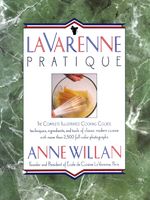Advertisement
Whipping Egg Whites
Appears in
By Anne Willan
Published 1989
Egg whites can be whipped to as much as eight times their own volume, particularly if an unlined copper bowl and balloon whisk are used. The whites interact with the copper to produce a dense texture, with maximum volume and a more stable foam: a balloon whisk is lifted easily in a high circular motion to incorporate more air. The next best alternative is an electric beater with a balloon whisk and a metal bowl. Glass and ceramic bowls are the least satisfactory as the whites tend to detach from the sides and separate; a plastic bowl is undesirable because it is difficult to remove traces of oil from the surface. To whip well, egg whites must be free of any trace of egg yolk, grease or water, as should the bowl and whisk. Egg whites that have been frozen will whip well. A small pinch of salt or cream of tartar added at the start of beating also helps egg whites stiffen. Sugar helps stabilize the foam, but must be added after the whites begin to stiffen, to make a firm glossy meringue.


